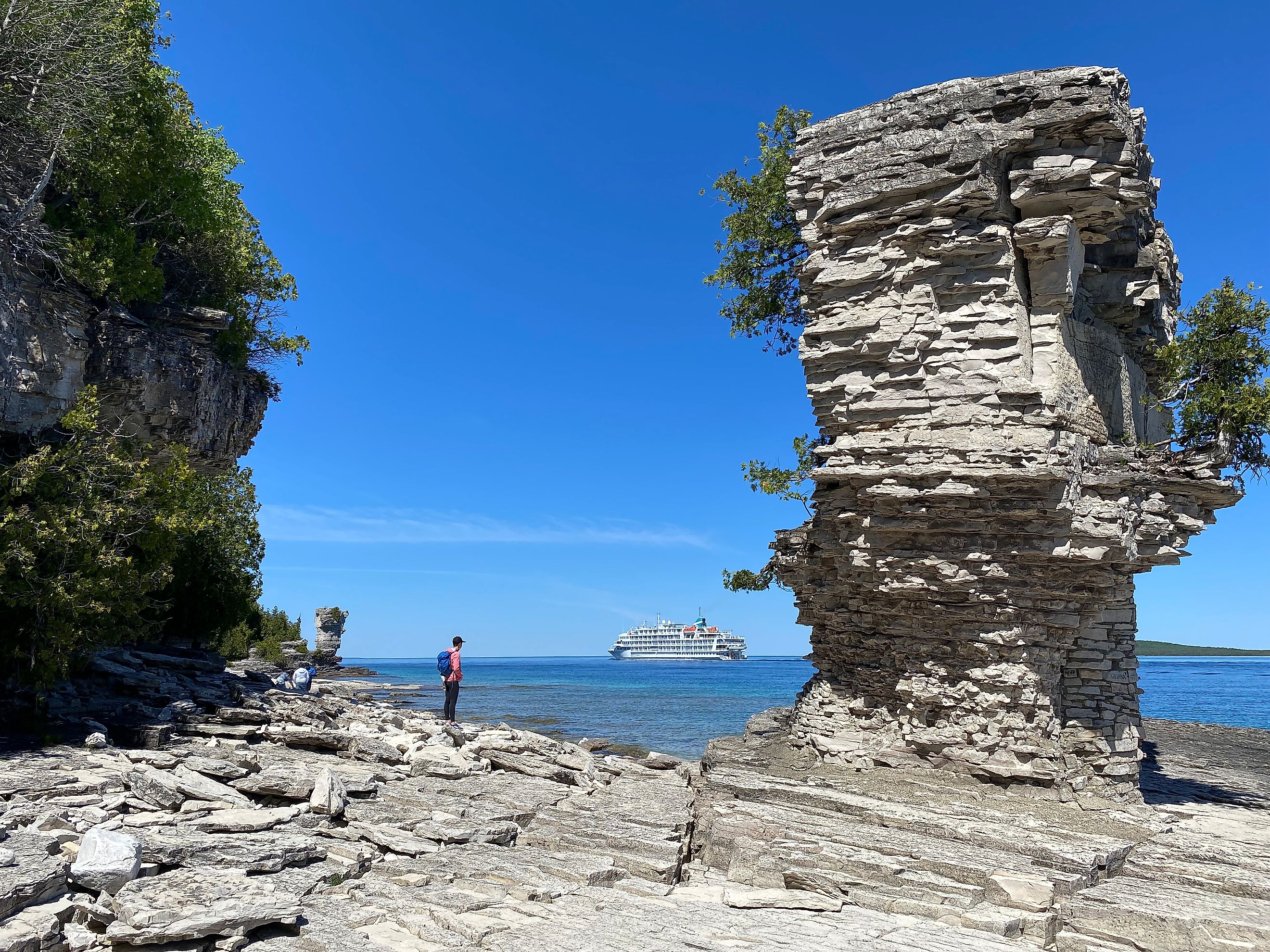
Fathom Five National Marine Park
Canada's first National Marine Conservation Area extends off the tip of the Bruce Peninsula, forever enshrining the treasures of Lake Huron and the Niagara Escarpment. Fathom Five National Marine Park is not only aesthetically pleasing - thanks to ancient dolomite formations and coniferous forests rising in tandem from turquoise waters - but also a mecca for outdoor recreation and wild-north exploration. Using Tobermory as a base camp, thousands of amphibious humans flock to the "Scuba Diving Capital of Canada" each year to investigate its 22+ nearshore shipwrecks, while many more board glass-bottom boat tours of those same submerged graveyards, as well as the idyllic surrounding islands.
Geography
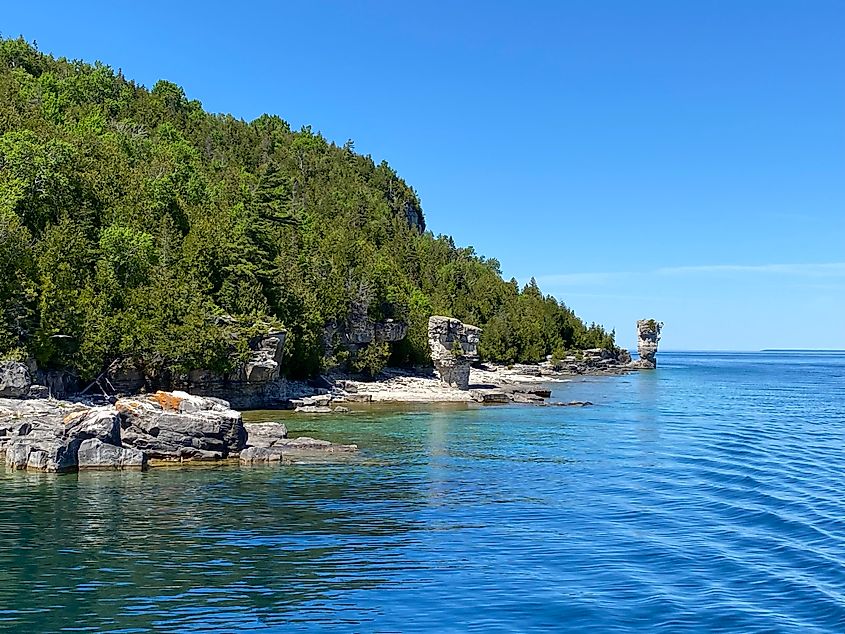
Fathom Five National Marine Park encompasses 112 square kilometers of freshwater and dryland ecosystems. Its boundary includes a sliver of the northernmost portion of southern Ontario's Bruce Peninsula (aka Saugeen Peninsula), 20 islands, and a splash of Georgian Bay (i.e. an extension of Lake Huron). Note: the park and peninsula lies right at the imaginary transition point between the Great Lake and its massive corresponding bay - the world's largest freshwater archipelago, in fact.
Fathom Five is also situated on a section of the famed Niagara Escarpment. This magnificent limestone arch runs from the southern shore of Lake Ontario to the western shore of Lake Michigan, en route plunging into Lake Huron at the tip of the Bruce Peninsula, and reemerging on the north shore of Lake Huron, before rolling across northern Lake Michigan.
The quaint yet popular village of Tobermory sits at the south-central base of the marine park. This is where visitors can procure tour tickets, scuba gear, and accommodations. Tobermory is most commonly accessed from the Greater Toronto Area, and some of the province's other populous centers, by taking Highway 6 all the way to the tip of the long, slim peninsula. During the fair-weather season, it can also be reached from the north shore of Lake Huron/Manitoulin Island, thanks to the M.S. Chi-Cheemaun ferry, which sails two or three times daily between early May and late October.
Finally, Fathom Five is adjacent to the equally-stunning Bruce Peninsula National Park. They even share the same visitor center (and 20-meter-tall lookout tower). Prospective tourists, therefore, would be remiss to not check out both synergistic places.
History
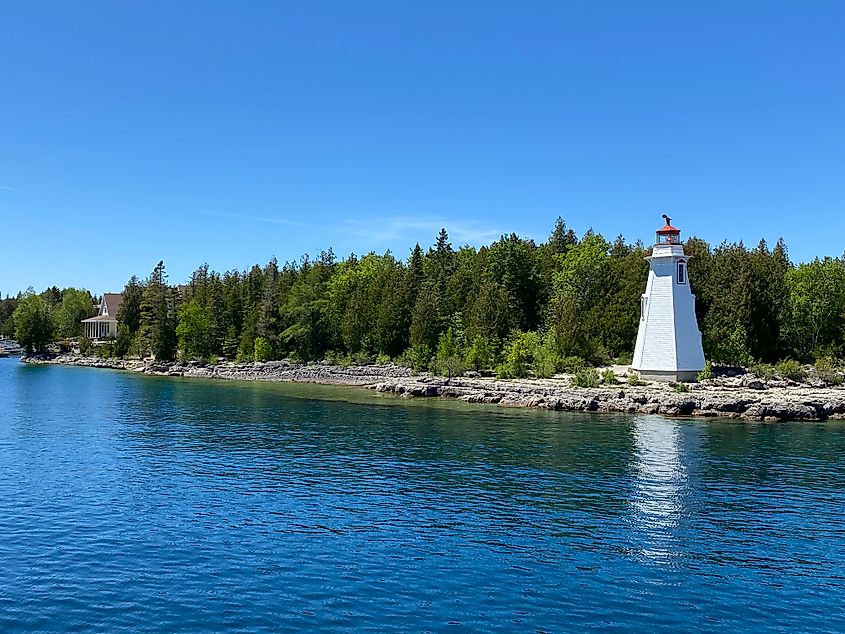
Prior to European colonization, and long before the formation of the park, the modern-day boundary of Fathom Five and the rest of the Bruce Peninsula was home to several distinct Indigenous nations. Parks Canada offers the following land acknowledgement:
We acknowledge the Territory of the Anishinabek Nation: The People of the Three Fires known as Ojibway, Odawa, and Pottawatomie Nations. And further give thanks to the Chippewas of Saugeen and the Chippewas of Nawash (known collectively as the Saugeen Ojibway Nation), as the traditional keepers of this land.
By the second half of the 19th century, settlers took notice of the region for its fishing and lumber prospects (in addition to mostly fruitless agricultural exploits). This is when the schooners and steamships learned of the capricious waters of Lake Huron/Georgian Bay. There are at least 22 historical shipwrecks within Fathom Five's boundary, including The Sweepstakes and The City of Grand Rapids, which sit at the bottom of Tobermory's Big Tub Harbour. Plus, there are no shortage of anecdotes of additional vessels still waiting to be formally documented.
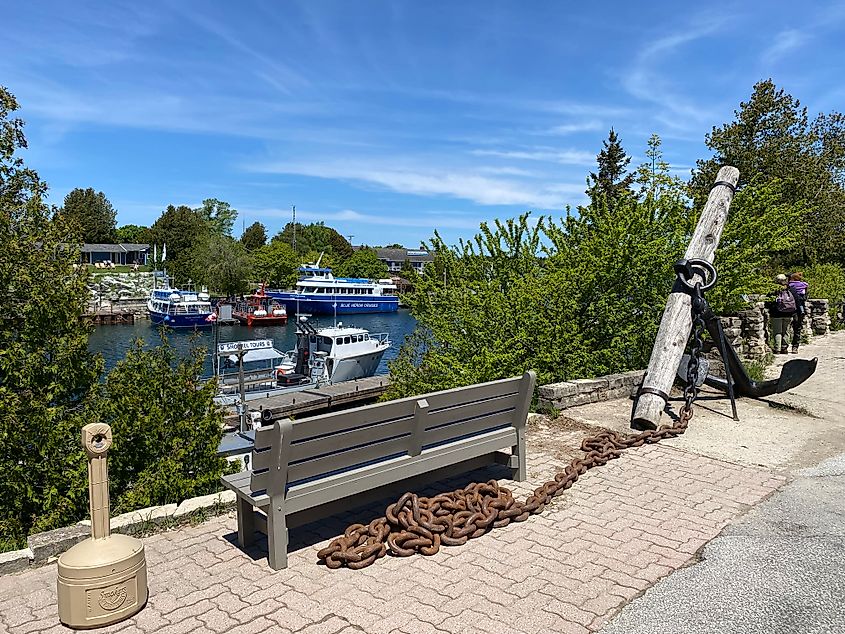
In an effort to quell the persistent danger, three lighthouses were erected. One went up on Fathom Five's two largest islands: Cove (1858) and Flowerpot (1897), respectively, and another at the mouth of Big Tub Harbour (1885).
Fathom Five National Marine Park was established on July 20th, 1987. In doing so, Parks Canada consolidated the natural and historical treasures of both Fathom Five Provincial Park and the western portion of Georgian Bay Islands National Park. At that time, Fathom Five was the first National Marine Conservation Area (NMCA) in the country. Since then, four more have joined the club.
Fun fact: the name was plucked from Shakespeare's The Tempest: "...full fathom five thy father lies."
Three years after its inception, Fathom Five National Marine Park, along with Bruce Peninsula National Park and the rest of Ontario's 725-kilometer portion of the Niagara Escarpment was designated as a UNESCO Biosphere Reserve.
Main Attractions
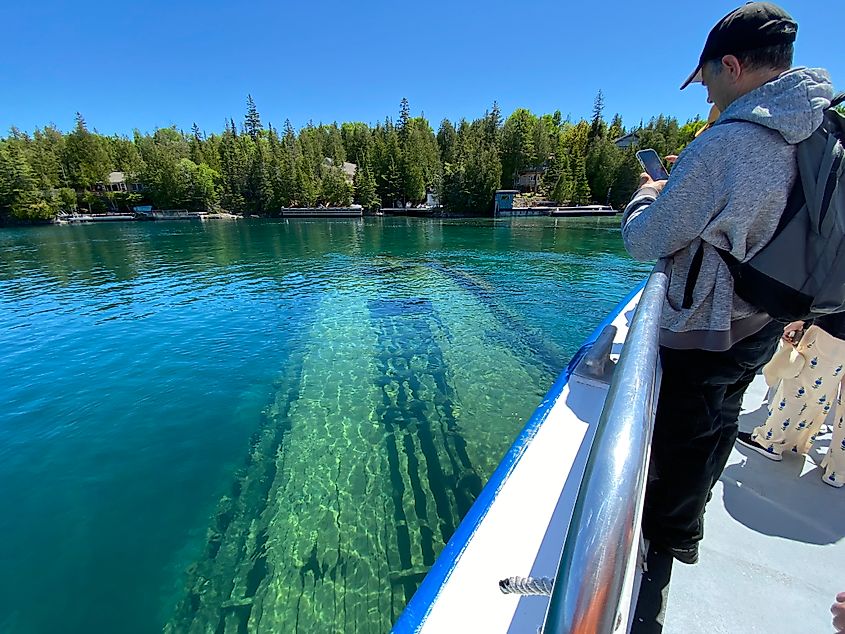
Glass-Bottom Boat Tours
The best way to get an overview of Fathom Five's footprint, history, and highlights is to register for a glass-bottom boat tour. Several companies operate out of Tobermory - all of which maintain excellent reputations. I went with Blue Heron Cruises, and would certainly recommend their services. Passengers have the option of a continuous cruise, or of getting off on Flowerpot Island (with a pre-ordained pick-up time) for a side adventure of their own choosing (more on this in a moment). Either way, patrons get ample time in Big Tub Harbour, where the two well-preserved shipwrecks can be clearly seen from the boat's upper deck or transparent main floor. The tour then heads for the major nearby islands while a friendly guide expounds on the history of the region. Blue Heron also offers a separate sunset cruise along the iconic coast of Bruce Peninsula National Park.
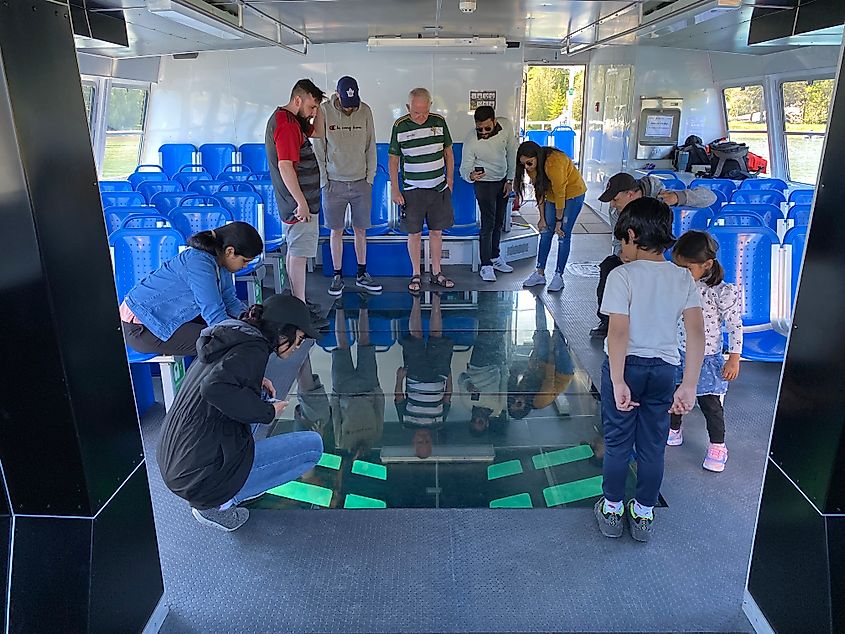
Our trustee tour guide, Travis Kinch, had this to say about his experiences in and around Fathom Five National Marine Park:
I started doing this about ten years ago, when I fell in love with the area right out of college. The beauty of the shoreline and surrounding waters, the eerie shipwrecks that we get to see, and the interesting people that I get to interact with from all over the world all keep me coming back year after year. You really can't beat the northern Bruce Peninsula and Tobermory.
Flowerpot Island
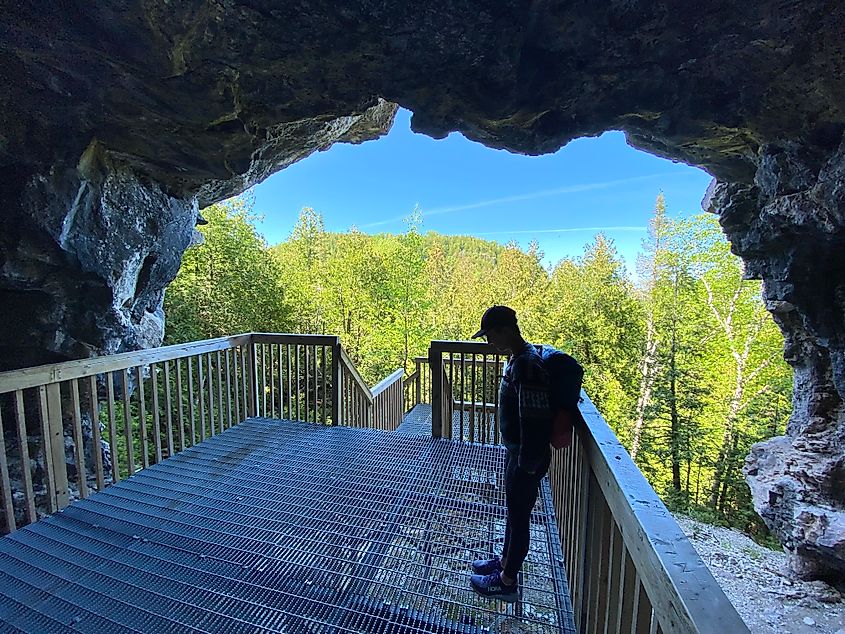
The second biggest island within Fathom Five is also the only one with modest, tourist-accommodating infrastructure. Along with a dock for incoming boats (i.e. the only way to access the island…other than paddling there, as some choose to do), Flowerpot Island also has a small network of hiking trails (woodland and coastal), six shoreline tent sites for overnight camping, bathroom and picnic facilities, and an immaculately-maintained (thanks to the Friends of the Bruce District Parks) lighthouse/lightstation museum. But of course, the namesake dolostone formations are the marquee attractions. These uniquely-eroded sea stacks are endlessly photogenic but won't last forever, so get here before they crumble (and be gentle).
Scuba Diving/Snorkelling
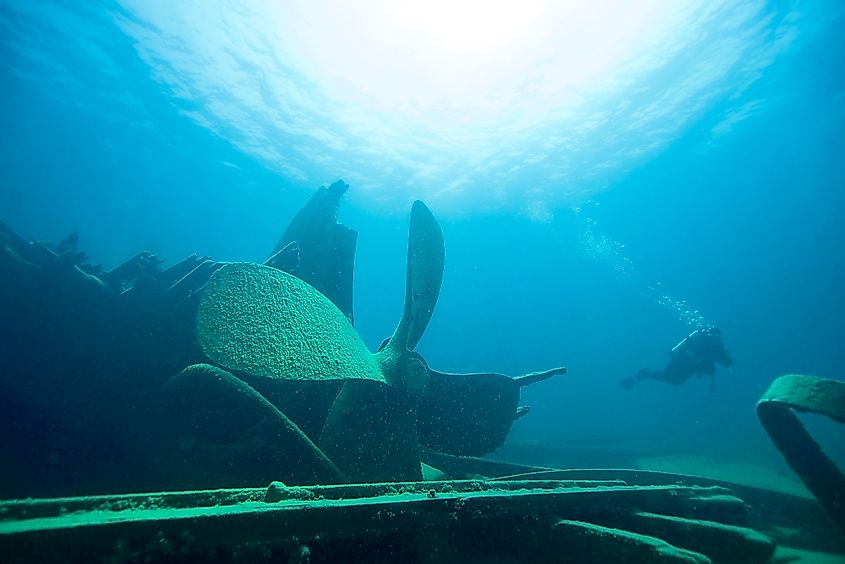
Those willing to dive and/or snorkel in the frigid waters (even in the summer) of Tobermory/Fathom Five will be immensely rewarded. The consistently clear conditions afford impeccable views not only of the historic shipwrecks, but also the underwater cliffs, caves, and overhangs that have been forged over hundreds of millions of years.
Flora and Fauna
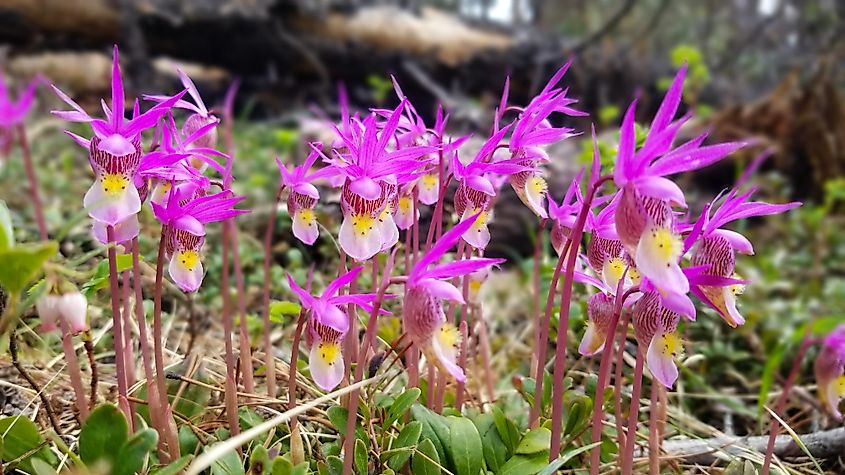
The Bruce Peninsula and freshwater islands included within Fathom Five's boundary constitute a small but standout ecosystem. The craggy spine of the Niagara Escarpment, alvars, wetlands, and clean, crisp waters of Lake Huron/Georgian Bay lay the foundation upon which many species of flora and fauna flourish.
Even though Fathom Five is a Marine National Park, one of the first things that visitors will notice is how dense the forest cover is. Spruce, white pine, birch, tamarack, balsam, mountain ash, trembling aspen and ancient cedars in excess of 1,500 years old (which are part of the oldest forest in eastern North America, and rank as some of the oldest living trees in the world) have all found their place atop the weathered limestone. This cast of characters is even more impressive when one considers the significant timbering that took place on both the mainland and islands during the early 1900s. As such, many trees are second and third stand, with the aforementioned cedars being the miraculous exception.
The deep forest greens and expressive blue waters already create a beautiful northern aesthetic, but the area's color palette does not stop there. Despite the capricious seasons, the Bruce Peninsula and islands of Fathom Five are home to a bountiful supply of wildflowers. At least 34 species of orchids have been identified - some of which are quite rare. If visiting prior to peak season, look for the spotted coral root, rams head, lady slipper, rattlesnake plantain, and even the Alaskan rein orchid. And if setting foot on Flowerpot Island between mid-May and early June, you will be treated to blooms of calypso, aka "fairy slipper" - pink, magenta, or white flowers that have a pouch-like labellum with a yellow (or some other contrasting color) focal point. Additional accents are offered by the distinctive golden-orange lichen that cover limestone boulders all along the Georgian Bay shoreline.
Speaking of Flowerpot Island, day-hikers and overnight campers can take solace in knowing that there are only small animals (such as red squirrels, snowshoe hares, raccoons, otters, and beavers) and harmless snakes (i.e. mostly garter snakes and some watersnakes). Cove Island and the mainland, on the other hand, see the likes of deer, foxes, coyotes, black bears, and even venomous Massasauga rattlesnakes.
Along with Lake Huron's bounty of native fish, the skies above are also teeming with life. Birders might spot the great blue heron (after which the local tour agency takes its name), the great black-backed gull, red-breasted and common mergansers, the double-crested cormorant, ring-billed and herring gulls, common and caspian terns, and iconic raptors such as bald eagles, turkey vultures, and ospreys.
Parting Thoughts
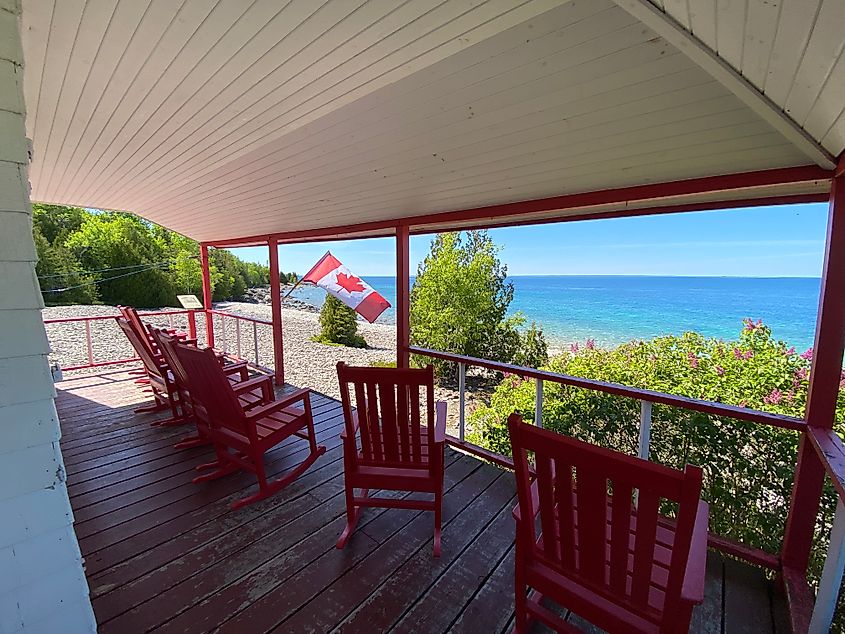
As above, so below. Such is the case in Fathom Five National Marine Park, where life, beauty, and activities are abundant in and out of the turquoise, azure, and deep-blue waters. Canada's first marine conservation area is a worthy destination unto itself, but when paired with the coastal splendor of Bruce Peninsula National Park and the amenities of Tobermory, a full vacation trifecta emerges. The northern stretch of the Bruce Peninsula, where it gazes into the expansive Great Lake, has remained one of my favorite places in the world - even after a decade of international travel.











